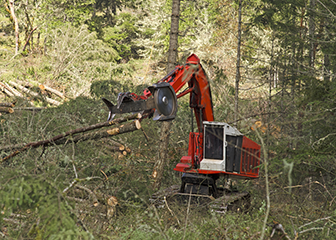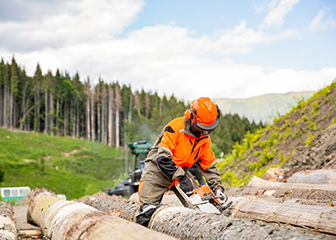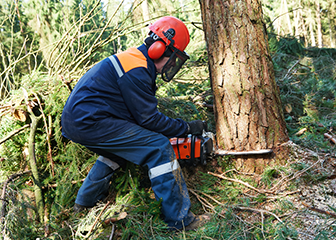Summary
Please enable javascript to play this video.
| Quick Facts: Logging Workers | |
|---|---|
|
$49,540 per year
$23.82 per hour |
|
| High school diploma or equivalent | |
| None | |
| Moderate-term on-the-job training | |
| 44,300 | |
| -2% (Decline) | |
| -1,000 | |
What Logging Workers Do
Logging workers harvest trees to provide the raw material for many consumer goods and industrial products.
Work Environment
Logging is physically demanding and can be dangerous. Workers spend all their time outdoors, sometimes in poor weather and often in isolated areas. Most work full time, and some work more than 40 hours per week.
How to Become a Logging Worker
Logging workers typically need a high school diploma, although some jobs do not require a formal educational credential. These workers get on-the-job training to become familiar with forest environments and to learn how to operate logging machinery.
Pay
The median annual wage for logging workers was $49,540 in May 2024.
Job Outlook
Overall employment of logging workers is projected to decline 2 percent from 2024 to 2034.
Despite declining employment, about 6,000 openings for logging workers are projected each year, on average, over the decade. All of those openings are expected to result from the need to replace workers who transfer to other occupations or exit the labor force, such as to retire.
State & Area Data
Explore resources for employment and wages by state and area for logging workers.
Similar Occupations
Compare the job duties, education, job growth, and pay of logging workers with similar occupations.
More Information, Including Links to O*NET
Learn more about logging workers by visiting additional resources, including O*NET, a source on key characteristics of workers and occupations.
 United States Department of Labor
United States Department of Labor





